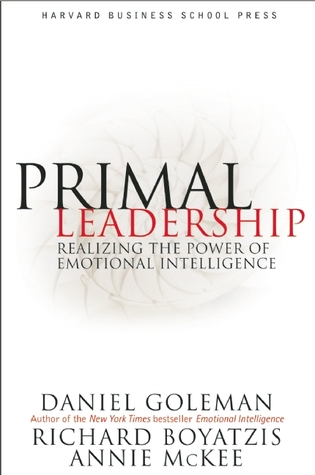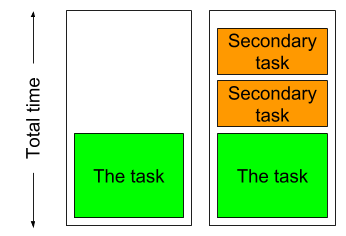 It Doesn’t Have to Be Crazy at Work by Jason Fried, David Heinemeier Hansson
It Doesn’t Have to Be Crazy at Work by Jason Fried, David Heinemeier Hansson
My rating: 4 of 5 stars
This book is specifically about the way their start up is run, which is great but if you have external shareholders etc then some of the tips may be harder to do. If you are trying to carve out your own corner of calm there are still items in the list of tips can still be useful.
Your company is a product. Yes, the things you make are products (or services), but your company is the thing that makes those things. That’s why your company should be your best product.
- Curb Your Ambition
- Bury the hustle – busy should not be the badge of honor you have to enjoy life
- Happy pacifists – work is not about big fights, be content with your own world
- Our goal: No goals -you don’t need fake goals to achieve something great
- Don’t change the world – set out to do good work in a fair way
- Make it up as you go – don’t try to plan out too much, let things evolve
- Comfy’s cool – discomforts not the aim, delivering productively is
- Defend Your Time
- 8’s enough, 40’s plenty – cut out what’s unnecessary then you have time
- Protectionism – protect what matters, your employees time and attention
- The quality of an hour – make quality time, like long 3-4 hours of concentration
- Effective > Productive – when you’ve finished stop, don’t fill time unnecessarily
- The outwork myth – don’t try to out work others by working longer its a myth
- Work doesn’t happen at work – make a way to let work happen at work
- Office hours – set aside time to help people on a schedule, not 24/7
- Calendar Tetris – make booking meeting tough so only key meetings happen
- The presence prison – stop keeping people updates where you are just work
- I’ll get back to you whenever – don’t expect immediate responses
- Fomo? Jomo! – keep informed in a condensed form not continuously
- Feed Your Culture
- We’re not family – the best companies support your time with your family
- They’ll do as you do – workaholism is a contagious disease, lead by example
- The trust battery – build the trust battery it’s key to work relations
- Don’t be the last to know – be proactive finding small issues before they grow
- The owner’s word weighs a ton – realise the weight of your words on people
- Low-hanging fruit can still be out of reach – thing appearing easy might not be
- Don’t cheat sleep – nearly everything can wait until morning
- Out of whack – allow people to balance, as in give and take not just give
- Hire the work, not the résumé – see what people have done not just their CV
- Nobody hits the ground running – everyone takes time, there are no quick wins
- Ignore the talent war – grow and nurture your own tallent
- Don’t negotiate salaries – pay the same for the same work, pay market rate
- Benefits who? – give benefits to get people out the office not stuck in it
- Library rules – around working areas treat them like libraries to get things done
- No fakecations – actual disconnection to revitalise
- Calm goodbyes – explain why people leave so people don’t fear they are next
- Dissect Your Process
- The wrong time for real-time – real-time sometimes, asynchronous most times
- Dreadlines – dates are fine but allow scope to be cut rather than over working
- Don’t be a knee-jerk – don’t meet, write. Don’t react, consider.
- Watch out for 12-day weeks – watch for weekend working
- The new normal – things become the norm quickly, don’t “just this time”
- Bad habits beat good intentions – start as you want the culture to be
- Independencies – don’t wait for web & iOS.. to be ready release independently
- Commitment, not consensus – “disagree & commit”. Decide, explain, go
- Compromise on quality – not everything need to be “airworthy” but “fine”
- Narrow as you go – as you progress narrow the scope of what you are doing
- Why not nothing? – doing nothing can be the hardest choice but worth it
- It’s enough – don’t flog yourself, what is good enough that people are happy
- Worst practices – there is no single best way so don’t just adopt best practice
- Whatever it doesn’t take – “what will it take?” not “whatever it takes”
- Have less to do – if it does not add value then stop doing it
- Three’s company – three is the perfect number for meetings, not more or less
- Stick with it – get things finished or take a break but don’t move on till it done
- Know no – you can change your mind, but if you say yes then you can’t
- Mind Your Business
- Risk without putting yourself at risk – measure risk and gamble with care
- Season’s greetings – work with the seasons, shorter in summer etc
- Calm’s in the black – don’t push too hard, enjoy the calm and grow with it
- Priced to lose – don’t become dependent on a key account think product
- Launch and learn – don’t use focus groups get your product in use
- Promise not to promise – it ties your hands and reduces your options
- Copycats – that’s life move on, your direction not a snapshot in time is key
- Change control – don’t force everyone to upgrade, they can stay comfy
- Startups are easy, stayups are hard – don’t burn out, slow and steady wins
- “No big deal” or “the end of the world”? – one for you one for the customer
- The good old days – you don’t have to grow, if you happy stay there
 Nine Lies About Work: A Freethinking Leader’s Guide to the Real World
Nine Lies About Work: A Freethinking Leader’s Guide to the Real World Get to the Point!: Sharpen Your Message and Make Your Words Matter
Get to the Point!: Sharpen Your Message and Make Your Words Matter The Phoenix Project: A Novel About IT, DevOps, and Helping Your Business Win
The Phoenix Project: A Novel About IT, DevOps, and Helping Your Business Win


 Primal Leadership: Unleashing the power of Emotional Intelligence
Primal Leadership: Unleashing the power of Emotional Intelligence Great Boss, Dead Boss: How to exact the very best performance from your company and not get crucified in the process
Great Boss, Dead Boss: How to exact the very best performance from your company and not get crucified in the process This Is Lean: Resolving the Efficiency Paradox
This Is Lean: Resolving the Efficiency Paradox
